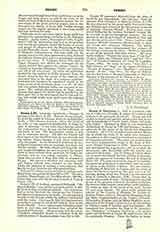

Nerses I-IV, Armenian patriarchs.—NERSES I, surnamed the Great, d. 373. Born of the royal stock, he spent his youth in Caesarea where he married Sanducht, a Mamikonian princess. After the death of his wife, he was appointed chamberlain to King Arshak of Armenia. A few years later, having entered the ecclesiastical state, he was elected catholicos, or patriarch, in 353. His patriarchate marks a new era in Armenian history. Till then the Church had been more or less identified with the royal family and the nobles; Nerses brought it into closer connection with the people. At the Council of Ashtishat he promulgated numerous laws on marriage, fast days, and Divine worship. He built schools and hospitals, and sent monks throughout the land to preach the Gospel. Some of these reforms drew upon him the king’s displeasure, and he was exiled, probably to Edessa. Upon the accession of King Bab (369) he returned to his see. Bab proved a dissolute and unworthy ruler and Nerses forbade him entrance to the church. Under the pretense of seeking reconciliation, Bab having invited Nerses to his table poisoned him. NERSES II, said to have been born at Aschdarag in Bagrevand, was patriarch from 548 to 557. He was a Jacobite Monophysite (cf. Ter-Minassiantz, 163-64). Under him was held the Second Council of Tvin or Dovin (554). NERSES III of Ischkan, surnamed Schinogh, “the church builder”, was elected patriarch in 641; d. 661. He lived in days of political turmoil. The Armenians had to choose between the Greeks and the Persians, and their new conquerors, the Arabs. Nerses remained friendly to the Greeks, whilst the military chiefs sided with the Arabs. Constans II (642-48) hastened into Armenia to punish the rebels and subject them to the Greek Church. Nerses and a number of bishops went forth to meet him, and declared they accepted the Council of Chalcedon. Disagreement with the satrap Theodorus compelled Nerses to withdraw from the administration of the patriarchate from 652 to 658. NERSES IV surnamed Klaientsi from the place of his birth, and Schnorkhali, “the Gracious”, from the elegance of his writings, b. at Hromcla, Cilicia; d. 1173. He was educated by his grand uncle, Patriarch Gregory Vkaiaser and afterwards by the vartabed, or doctor of theology, Stephen Manuk. Having been consecrated bishop by his brother, Patriarch Gregory III, he was sent to preach throughout Armenia. He was present at the Latin Council of Antioch in 1141 and was elected patriarch in 1166. Nerses, together with Emperor Manuel Comnenus, labored hard to unite the Greek and Armenian Churches. The union, however, was never consummated, the majority of the bishops remaining obstinate. Nerses is regarded as one of the greatest Armenian writers. His prose works include: “Prayers for every hour of the day” (Venice, 1822); his “Synodal letter” and five “Letters” to Manuel Comnenus (tr. Latin by Capelleti, Venice, 1833). He wrote in verse: “lesu Orti”, a Bible history; an “elegy” on the capture of Edessa; a “History of Armenia“; two “Homilies”, and many hymns. In the “lesu Orti”, the elegy on Edessa, and the first letter to Manuel Comnenus, we find testimonies to the primacy of the Bishop of Rome.
A. A. VASCHALDE

